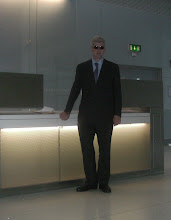To achieve fusion propulsion system, the hydrogen isotopes deuterium and tritium have to be heated to at least 100 million kelvin can this be done?. This strips electrons from the isotopes, creating a plasma of bare nuclei. If this plasma is hot and dense enough, the two types of nuclei fuse, giving off neutrons and huge amounts of energy. However, the plasma can only be contained by strong magnetic fields and it has proved very difficult to create containment fields that do not leak. Additionally, no one has yet managed to generate a stable fusion reaction that passes the break-even point where the reaction generates more energy than it takes to sustain it. Fortunately, in a fusion propulsion system (as opposed to one designed to produce electric power), the reaction doesn't need to go far beyond the break-even point to generate thrust. And containment is less of a headache because you actually want some of the plasma to escape. The problem is 100 million kelvin is not hot enough to generate thrust. At that temperature, the fusion reaction only generates neutrons, which are uncharged and therefore cannot be steered and fired through a magnetic jet nozzle.

This form of nuclear propulsion that would use microwaves to trigger fusion in a mixture of deuterium and tritium. The general idea of a fusion drive is to sustain an onboard fusion reaction and fire some of the energy created out the back of the spacecraft to generate thrust. However, harnessing fusion is not easy. The problem is to contain the super-hot plasmas of charged ions needed for fusion reactions. To produce thrust, you need charged particles. This is where the scheme proposed by a team at Marshall Space Flight Center, led by William Emrich divulges this reality to Wise Labs But there are other less conventional design than spear heading energy trust so science wont mind the crush, Wise labs comes in. Emrich's team has proposed using microwaves to heat the plasma to 600 million kelvin, triggering a different kind of fusion reaction that generates not neutrons but charged. Alpha particle is 6.64424 × 10-27 kg, or 3.7273 × 109 eV. Alpha particles have a low penetrating power and a short range (a few centimeters in air). The most energetic of them (up to 7.5 MeV) will generally fail to penetrate the dead layers of cells covering the skin and can be easily stopped by a sheet of paper for safety it seems to be one on track. These are known as alpha decay. An alpha particle is identical with the nucleus of a helium atom (4He), consisting of two protons and two neutrons.

 This form of nuclear propulsion that would use microwaves to trigger fusion in a mixture of deuterium and tritium. The general idea of a fusion drive is to sustain an onboard fusion reaction and fire some of the energy created out the back of the spacecraft to generate thrust. However, harnessing fusion is not easy. The problem is to contain the super-hot plasmas of charged ions needed for fusion reactions. To produce thrust, you need charged particles. This is where the scheme proposed by a team at Marshall Space Flight Center, led by William Emrich divulges this reality to Wise Labs But there are other less conventional design than spear heading energy trust so science wont mind the crush, Wise labs comes in. Emrich's team has proposed using microwaves to heat the plasma to 600 million kelvin, triggering a different kind of fusion reaction that generates not neutrons but charged. Alpha particle is 6.64424 × 10-27 kg, or 3.7273 × 109 eV. Alpha particles have a low penetrating power and a short range (a few centimeters in air). The most energetic of them (up to 7.5 MeV) will generally fail to penetrate the dead layers of cells covering the skin and can be easily stopped by a sheet of paper for safety it seems to be one on track. These are known as alpha decay. An alpha particle is identical with the nucleus of a helium atom (4He), consisting of two protons and two neutrons.
This form of nuclear propulsion that would use microwaves to trigger fusion in a mixture of deuterium and tritium. The general idea of a fusion drive is to sustain an onboard fusion reaction and fire some of the energy created out the back of the spacecraft to generate thrust. However, harnessing fusion is not easy. The problem is to contain the super-hot plasmas of charged ions needed for fusion reactions. To produce thrust, you need charged particles. This is where the scheme proposed by a team at Marshall Space Flight Center, led by William Emrich divulges this reality to Wise Labs But there are other less conventional design than spear heading energy trust so science wont mind the crush, Wise labs comes in. Emrich's team has proposed using microwaves to heat the plasma to 600 million kelvin, triggering a different kind of fusion reaction that generates not neutrons but charged. Alpha particle is 6.64424 × 10-27 kg, or 3.7273 × 109 eV. Alpha particles have a low penetrating power and a short range (a few centimeters in air). The most energetic of them (up to 7.5 MeV) will generally fail to penetrate the dead layers of cells covering the skin and can be easily stopped by a sheet of paper for safety it seems to be one on track. These are known as alpha decay. An alpha particle is identical with the nucleus of a helium atom (4He), consisting of two protons and two neutrons.



No comments:
Post a Comment